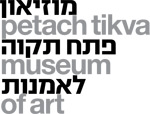Two exhibitions
Petach Tikva Museum of Art
30 Arlozorov St.
Pob 1, Petach Tikva
49100, Israel
www.petachtikvamuseum.com
16 December 2010 – 16 February 2011
Curator: Drorit Gur Arie
Female-sung eulogy, customary in Jewish congregations hailing from Islamic countries, is at the core of Itzik Badash’s new video work, Zala. Zala is an ancient Arab-Libyan designation for a keen wailer, the female medium who intertwines life and death in the female generational chain. Combining autobiographical, cultural and historical elements associated with the tradition of Libyan Jewry, Badash’s work delves into rites and rituals of life and death.
Badash’s family has set up a tribe of wailers, headed by Badash’s great grandmother, “Liza Zala.” Her family perished in Tripoli in World War II, and she has made her grief into a dirge, bequeathing this age-old tradition to the women in her family. Badash raises a great lament for this Jewish world, which was cut off from its origins and customs, against the backdrop of the Holocaust of North African (and Libyan) Jewry, which was pushed to the margins of public consciousness.
The dramatic presentation of the lament as an aesthetic of grief is intended to create a community of mourning as part of a social and spiritual process which channels emotion towards cathartic release. Badash pits the single wailer as a leading voice opposite a group of women gathering around her, intermittently responding to her gestures and voice. This choreography of weeping, between a female solo and the show of the chorus, produces an orchestrated musical-theatrical array, which heightens the power of the spiritual outpouring.
Badash fuses together symbols of affluence and death, Jewish and Christian myths, with a range of meanings pertaining to transformation and change. The work brings contents that have been repressed in Israeli culture to the fore, reinstating a popular traditional practice that has not been granted profound attention in contemporary art to the center of cultural discussion.
Pleated Blinds
26 November 2010 – 26 February 2011
Curator: Ory Dessau
The exhibition “Pleated Blinds” offers an international perspective on the status of photography and the intricate nature of representation in the contemporary cultural sphere. It focuses on self-referential contemporary photographic practices addressing their own processes, actions, materials, and contexts.
The exhibition is centered on disruption of photography’s quintessential technical and material difference which sets it apart from any other artistic medium. It engages in deconstruction of photography’s essentialist definitions, while challenging prevalent perceptions regarding photography as a documentary tool which records and reflects reality, thereby revealing other facets of photography as a mechanism of camouflage which generates blindness and promotes blurring and ambiguity.
Instead of relying on photography as a technology of representation, the works in the exhibition push the photographic frame to its edges, to its built-in cutting and fragmentation. They explore its relationship with that which remains outside the frame, with an exterior which return to the surface as absolute otherness, a non-assimilable sign. The featured works explore the status of the photographic image as such, as any other image—a representation, a sign of presence, of absence. The works represent their processes of formation, and each work is experienced as the sum total or a sequence of an interrupted and continuous sequence, of acts and situations.
On the whole, the exhibition rekindles the discussion of the identity, status, and state of the photographic medium in contemporary art, vis-à-vis the many changes that have occurred in it as a result of technological developments. It features photographic, cinematic and video works by Israeli and international artists.
Participating artists:
Aïm Deüelle Lüski , Efrat Shalem , Jennifer Allora & Guillermo Calzadilla , Moshe Ninio,
Shannon Ebner, Stan Brakhage, Thomas Demand, Thomas Ruff , Walead Beshty ,
Wolfgang Tillmans, Yanai Toister
The exhibition is held in collaboration with Goethe-Institut Tel Aviv and the
Shpilman Institute for Photography


